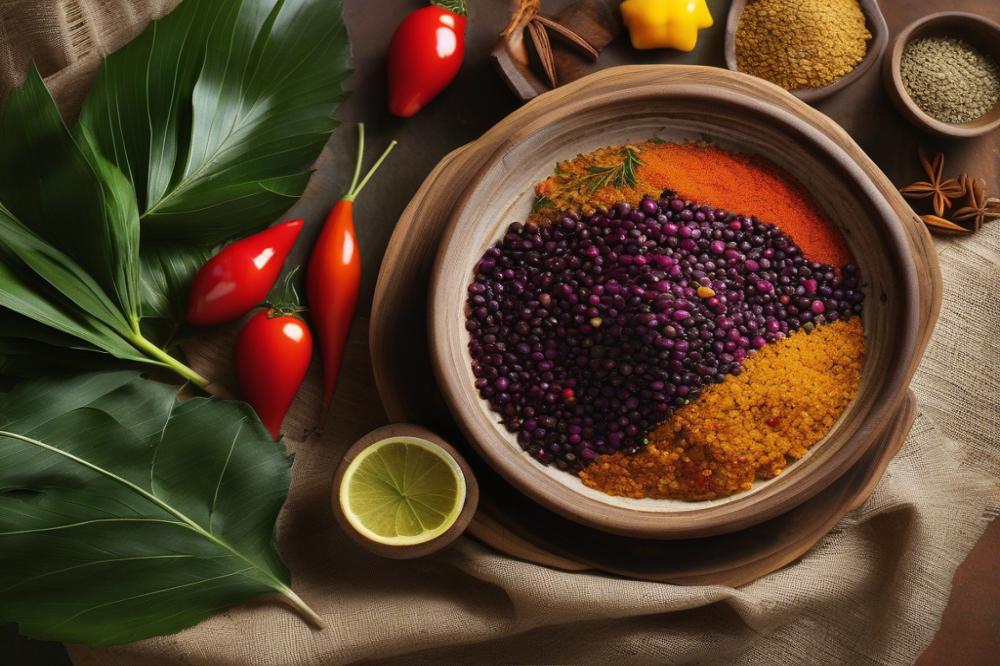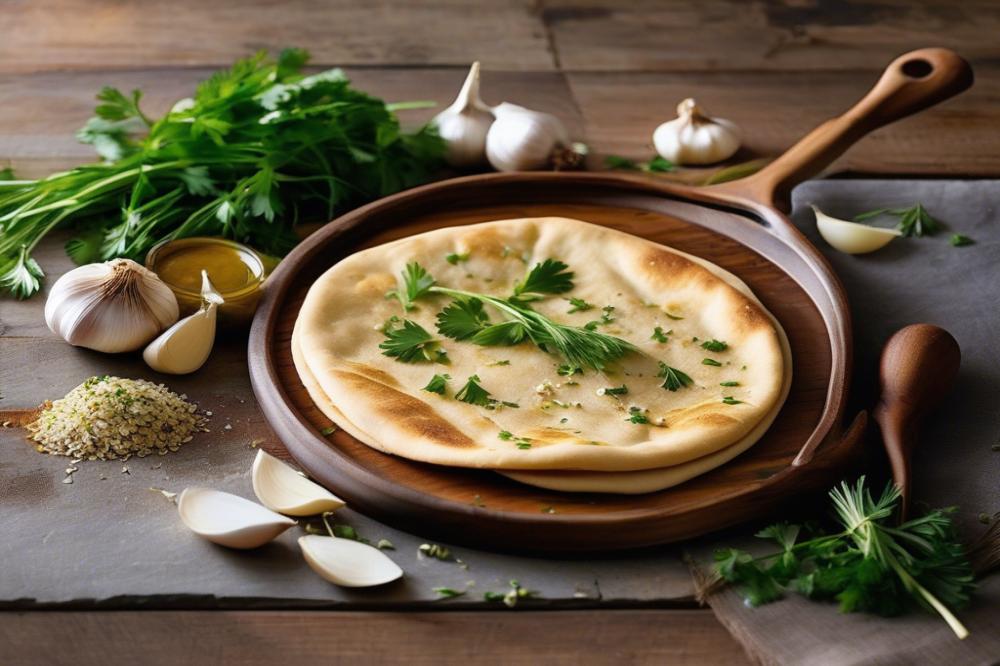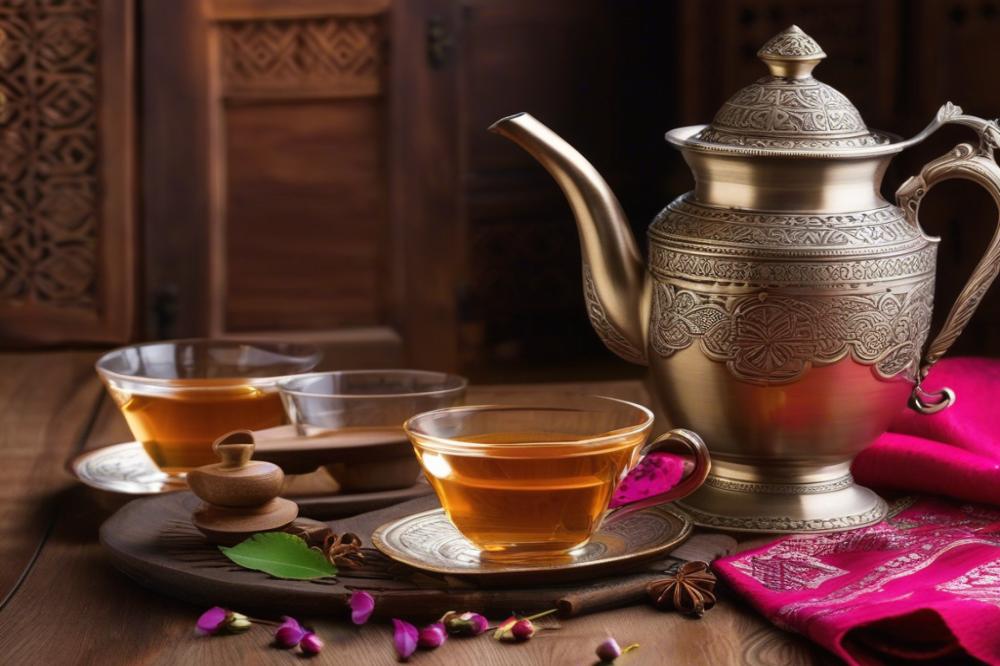Exploring the Flavors of Lebanese Mloukhieh Jute Leaves Stew
In Lebanon, Mloukhieh holds a special place in the hearts and kitchens of its people. This beloved dish showcases a deep connection to cultural heritage and regional flavors. Rich in tradition, it varies from family to family, each chef imparting a unique touch to their version. The primary ingredient, Jute leaves, serve as the star of the show, providing both taste and nutritional benefits that make it a popular choice among those who love healthy recipes. Beyond its flavors, the dish symbolizes togetherness, often served during family gatherings and festive occasions.
Jute leaves, known for their dark green hue, are packed with vitamins and minerals. They are often celebrated for their role in vegetarian dishes, offering iron, calcium, and fiber. These leaves also have a slightly tangy flavor, which contrasts beautifully with the other ingredients in the stew. Incorporating such nutritious elements into meals promotes a healthy diet while honoring traditional cooking methods. As a result, this dish embodies the essence of Middle Eastern food.
The preparation of Mloukhieh emphasizes time-honored techniques that have been passed through generations. Many families still opt for slow cooking, allowing the flavors to meld harmoniously. The use of fresh herbs and spices serves as essential components of the stew recipes. Garnishes, like lemon or fried onions, add a burst of color and flavor, highlighting the importance of presentation in Lebanese cuisine. Each step, from selecting the Jute leaves to the final simmering, brings a sense of pride in creating this cherished dish.
What is Lebanese Mloukhieh?

Mloukhieh is a traditional dish from Lebanese cuisine. It features jute leaves, which are cooked to create a rich, savory stew. These leaves, often referred to as “mloukhieh,” provide a unique flavor profile that many enjoy. The dish is a staple in various Middle Eastern food tables, celebrated for its health benefits and deliciousness.
Jute leaves have soft, tender properties. They are packed with nutrients, making them a great choice for healthy recipes. Often, they are used in vegetarian dishes, appealing to those seeking plant-based options. Their distinct taste adds depth to stews and soups. In Lebanese cooking methods, the leaves are usually simmered slowly to develop flavors.
This dish has a fascinating history. Origins can be traced back to ancient times when many cultures embraced jute. As trade routes connected regions, recipes evolved. In Lebanon, variations exist, influenced by local ingredients and personal touches. Some may add spices or different garnishes to enhance the base flavor of the stew.
Throughout the Middle East, you will find different takes on mloukhieh. In some areas, it is prepared with meat, offering a heartier meal. Others prefer a vegetarian version, highlighting the natural taste of the leaves. Each region’s recipe reflects local tastes, making it a diverse offering among traditional dishes.
Cooking techniques vary as well. In some households, the stew is thickened with ground sesame seeds, while others might use a splash of lemon juice for brightness. Such differences contribute to the charm of this delightful dish. No matter the preparation, mloukhieh inspires a strong sense of community and sharing among family and friends.
Ingredients and Cooking Instructions

List of Ingredients
- 500g jute leaves (Mloukhieh)
- 1 large onion, chopped
- 4 cloves garlic, minced
- 4 cups vegetable broth or water
- 1 tablespoon olive oil
- 1 teaspoon ground coriander
- 1 teaspoon cumin
- Salt and pepper to taste
- Lemon wedges for garnish
Cooking Instructions
Begin by carefully washing the jute leaves. Rinse them under cool water to remove any dirt or debris. After that, prepare your workspace by gathering all the necessary ingredients.
In a pot, heat the olive oil over medium heat. Add the chopped onion and sauté it until it becomes translucent. This usually takes about 5 minutes. Next, stir in the minced garlic and cook for another minute. The aroma will be delightful, filling your kitchen with the promise of a tasty meal.
Once the onions and garlic are fragrant, it’s time to add the ground coriander and cumin. Stir these spices into the mixture, allowing them to toast slightly for about a minute. Incorporating spices early enhances their flavor, making the stew even more delicious.
Pour in the vegetable broth or water. Bring the mixture to a boil before reducing it to a simmer. As it simmers, gently add the jute leaves. These will wilt, softening and releasing their unique flavor into the broth.
Allow the stew to simmer for about 20-30 minutes. This gives the jute leaves time to cook down and integrate with the spices. Season with salt and pepper according to your taste. It’s a good idea to taste it at this stage. Adjusting the flavors ensures you achieve the best balance. If you prefer a bit of acidity, consider squeezing some lemon juice into the stew.
For serving, ladle the hot stew into bowls. Garnish each bowl with fresh lemon wedges. This addition not only adds visual appeal but also provides a refreshing contrast to the flavors of the jute leaves.
Typically, Mloukhieh pairs well with rice or bread, making it a filling and satisfying dish. Whether serving it as a main course or part of a larger spread of Middle Eastern food, it promises to be a hit at the dining table.
Nutritional Information
This dish is packed with health benefits. Jute leaves are rich in vitamins A and C, providing essential nutrients for the body. Onions and garlic not only enhance flavor but also contribute to heart health. Vegetable broth adds hydration without extra calories. Olive oil offers beneficial fats, promoting better cardiovascular health.
Incorporating this vegetarian stew into your meal plan supports a balanced diet. Each component contributes to overall well-being, proving that traditional dishes can also be health-conscious choices.
Cooking Methods and Variations

Preparing Mloukhieh involves various traditional cooking methods that highlight the dish’s flavors. Home cooks often begin by sautéing onions, garlic, and other spices in olive oil. This step provides a rich base for the jute leaves. Simmering with these ingredients allows the flavors to blend seamlessly. Many people prefer to cook their stew in a large pot over low heat. This slow-cooking method helps the jute leaves become tender and enhances their natural flavor.
Several variations exist based on regional preferences. In some areas, cooks add chicken or rabbit to the stew, creating a heartier meal. Others lean toward vegetarian dishes, choosing to serve it with lentils or beans instead. Spices and garnishes can also change from one family to another. Popular additions include a squeeze of lemon or a sprinkle of chili flakes for some heat. These differences make each version of this dish special.
For those wishing to achieve the best flavor and texture, cooking techniques matter. Using fresh jute leaves is crucial, if possible. When chopping the leaves, aim for uniformity in size to ensure they cook evenly. Choosing the right olive oil adds depth to the dish. When seasoning, a balance between salt and acidity is key. Over time, the flavors develop, creating a comforting and inviting stew. Cooking in smaller batches can also make a significant difference, providing more control over the finished product.
Some believe that the dish tastes even better the next day. The ingredients have more time to mingle, resulting in a more robust flavor. Serving Mloukhieh with rice or bread is traditional. The bread acts as an excellent way to soak up the delicious broth. Adding garnishes like fresh cilantro or crushed nuts can also elevate the presentation. Simple choices can greatly impact this Middle Eastern food experience.
Cultural and Health Aspects of Lebanese Mloukhieh

Mloukhieh holds a special place in Lebanese households. Many families consider it a comfort food, often made during gatherings and celebrations. The warm stew brings people together, representing tradition and shared memories. Jute leaves, the star of this dish, symbolize resilience and growth, much like the culture it comes from. During festive occasions, serving this dish can ignite fond conversations and laughter among family and friends.
Health benefits associated with jute leaves are worth noting. Rich in vitamins and minerals, these greens enhance overall well-being. They are particularly high in iron, helping combat anemia. Fiber content in this dish promotes digestive health, which is essential for everyone. Adding garlic and coriander to the stew not only boosts flavor but also supports immune function. With its nutrient-dense profile, it stands proud among other healthy recipes in Lebanese cuisine.
Vegetarian dishes in Middle Eastern food often celebrate greens, but Lebanese Mloukhieh has a distinct flavor. The unique cooking methods contribute to a depth of taste that many find irresistible. Comparisons with other regional recipes show that while many celebrate plants, few capture hearts like this stew. On the table, Jute leaves dance alongside rice or bread, showcasing how versatile this dish can be. Garnishes like lemon or chili elevate the flavors, making each bite a delightful experience.
Mloukhieh is not just food; it’s a bridge connecting generations. Many parents pass down their own stew recipes to children, ensuring the cherished tradition continues. These practices strengthen familial ties and cultural identity. Enjoying this meal fosters an appreciation for sustainability and seasonality in cooking. Traditional dishes like this serve not only to nourish but also to instill values. In the bustling kitchens of Lebanon, mixing fresh ingredients creates a legacy.
Garnishing and Serving Suggestions
Garnishing adds a beautiful finish to Mloukhieh. Fresh herbs like parsley or coriander can brighten the dish. Slices of lemon placed on the side are not only visually appealing but also offer a zesty contrast when squeezed over the stew. Toasted pine nuts scattered on top provide a delightful crunch. Feeling adventurous? Try adding a swirl of warmed olive oil for richness.
When it comes to serving, consider matching this delicious stew with rice, as it soaks up the flavors perfectly. White rice is a classic choice, but seasoned rice with spices can elevate the experience. Bread, particularly pita, serves as a great alternative for scooping. Placing a bowl of plain yogurt on the table can temper the stew’s spices. This creamy element invites guests to customize their bowls just as they like.
Thoughtful garnishes enhance both flavor and visual presentation. They make the dish look more inviting and delicious. For a rustic feel, serve Mloukhieh in large bowls. Each person can take their portion, enjoying the communal experience that is often part of Middle Eastern food culture.
Remember that Mloukhieh is versatile! Adjust garnishes based on what you have available. Adding a sprinkle of chili flakes can bring a hint of heat. Fresh mint leaves can provide a refreshing twist. These simple touches turn a comforting stew into something memorable.
Sharing traditional dishes should feel warm and welcoming. Encourage family and friends to pick their favorite sides. Presenting healthy recipes with various options ensures everyone has something they enjoy. Allow your creativity to flow when arranging the table. A well-prepared meal reflects not just the food but the care behind it.
Final Thoughts on Mloukhieh Stew
Lebanese Mloukhieh holds a special place in the hearts of many. This dish is not only a staple in Lebanese homes but also a reflection of the rich culture and traditions of the region. Families often gather around the table to enjoy this flavorful stew, celebrating both the dish and their shared heritage. Over generations, its preparation has been passed down, making it a cherished part of family recipes.
The taste results from the delightful combination of jute leaves, spices, and tender meat, often chicken or beef. Each spoonful is a harmony of texture and flavor that transports you to the vibrant markets of Lebanon. Its versatility makes it suitable for various occasions. Whether it is served on a simple weeknight or at a festive gathering, Mloukhieh can adapt to fit the moment.
Health-wise, this stew is packed with nutrients. Jute leaves are known for their vitamins and health benefits, contributing to a balanced diet. Adding this dish to your meal plan can enhance your nutritional intake while satisfying your taste buds.
For those who have yet to try making Mloukhieh, there has never been a better time. With straightforward techniques and readily available ingredients, preparing this dish at home can be rewarding. A personal touch can make the experience even more enjoyable. Embrace the flavors, and dive into the joy of cooking this delightful stew.



